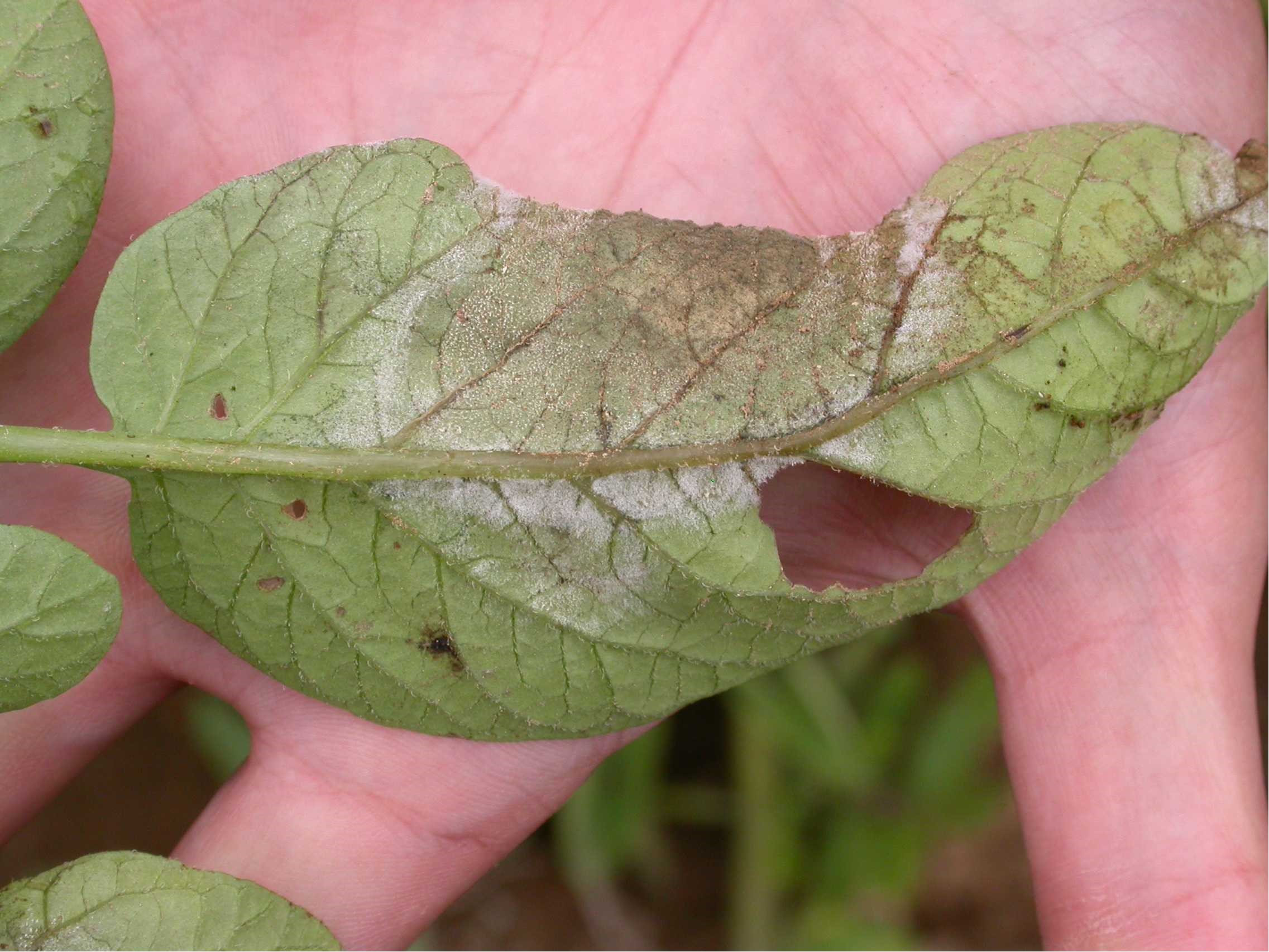Please click here to access the main AHDB website and other sectors.
- Home
- Knowledge library
- Late blight disease and its management in potatoes
Late blight disease and its management in potatoes
Late blight remains the single most important potato disease in GB. It is caused by the oomycete Phytophthora infestans which can infect foliage, stems and tubers.
Visit our library of late blight research reports
Why late blight is an issue
The pathogen can grow at a very rapid rate after infection and visible symptoms can appear in a matter of days. If infected tubers enter a store the disease can develop there, leading to huge losses. There are various genotypes (“strains”) of P. infestans present in GB, and elsewhere, which can differ in the amount of disease they cause (their aggressiveness) and their fungicide sensitivity. Changes in these characteristics have the potential to make the disease more damaging and difficult to control.
Late blight biology
The main method of dispersal of P. infestans in regions such as GB is via air-borne sporangia from infected crops, volunteer potatoes or plants in outgrade piles, although infected seed can also be a source of outbreaks.
Asexual reproduction is rapid and is the most common type. Sporangia can either infect new plants directly or they can release zoospores which disperse in water films before encysting and infecting the plant.
Sexual reproduction is less common in GB. It occurs where the two mating types (A1 an A2) of P. infestans are present in plant tissues. Thick-walled oospores are formed which can persist in soil.
Symptoms
Late blight symptoms on leaves generally appear as irregular shaped dark spots which enlarge as the disease develops. On the upper surface a lighter green halo often surrounds the necrotic area and, on the lower surface, whitish spore–bearing mould develops around the lesions under moist conditions.
Tuber infection symptoms are a darker brown, sometimes purplish, area on the tuber surface. The internal rot is a reddish brown granular rot which can remain close to the surface or progress to the centre of the tuber. Rot development is irregular and sometimes threadlike through the tuber flesh. Late blight causes skin damage which allows opportunistic bacteria to invade and cause soft rotting.
Forecasting disease risk
Temperature and relative humidity are critical in determining the risk of infection by P. infestans. Hutton Criteria are a refinement of the Smith Period and are defined as two consecutive days with a minimum temperature of 10°C, and at least six hours of relative humidity (90%).

Late blight lesions on the underside of a leaf
Management of late blight
An IPM approach is required to deal with late blight, including:
- Use of more blight resistant cultivars
- National List testing includes assessments of variety susceptibility to late blight. The ratings are provided in the Potato Variety Database
- Control of primary inoculum sources (volunteer potatoes, outgrade piles, infected crops, seed)
- Use of disease forecasting tools to understand blight risk and target fungicide application accordingly
- Control of tuber blight to avoid storage losses and primary, seed-borne inoculum for the following season
More information on managing the risk of late blight is provided in a grower guide that was last updated in 2013. It refers to pesticides that are no longer approved for use on potatoes in GB.
Fight Against Blight (FAB)
Samples were collected from suspected late blight outbreaks by agronomists and others, then sent for verification and genotyping. The results were provided to industry and were also used in research projects to improve the understanding of the disease and the changing profile of the dominant genotypes over time.
In the video Dr David Cooke, from the James Hutton Institute (JHI), reviews the analyses that have been possible using nearly 20 years of the AHDB-funded Fight Against Blight data.
Read the FAB reports, including information on fungicide sensitivity
David Cooke discussing late blight outbreaks, based on the Fight Against Blight data
The Fungicide Resistance Action Group (FRAG-UK) website provides more information on how to avoid fungicide resistance developing and how to manage it once it has evolved. Their publications include information on late blight.
Sectors:
Tags:


